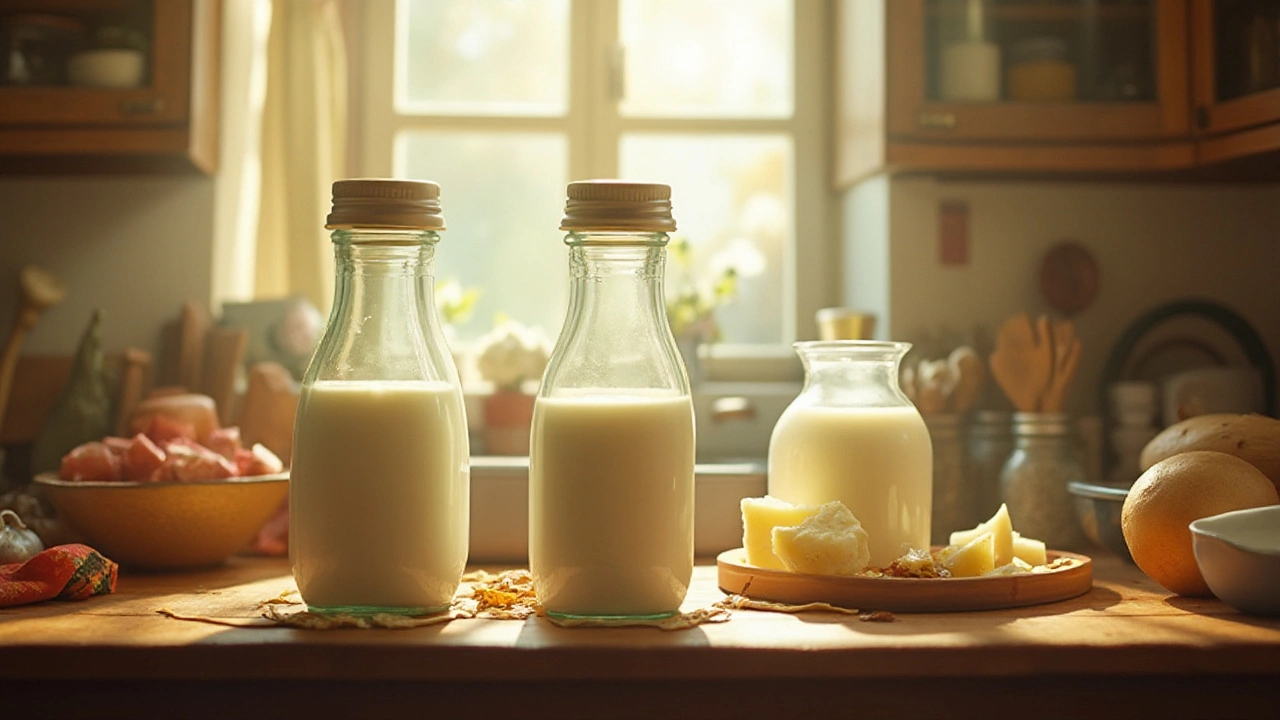Milk Handling: Keep Your Milk Fresh and Safe
Ever opened a carton of milk only to find it sour after a few days? It’s not magic – it’s how you handle it. Let’s walk through the basics so your milk stays tasty, safe, and ready for cooking.
Storing Milk the Right Way
First thing’s first: temperature matters. Milk should sit at 35‑40°F (2‑4°C). If your fridge is warmer, milk ages faster. Use the coldest spot – usually the middle shelf, not the door where temperatures swing.
Choose the right container. Glass or sturdy plastic jars seal tighter than soft cartons. When you pour milk, keep the lid tight to block air, which speeds up spoilage. If you bought milk in a large jug, transfer only the amount you’ll use to a smaller container; the rest stays unused and exposed longer.
Don’t forget hygiene. Always use a clean spoon or pour directly from the bottle. Introducing crumbs or dirty utensils adds bacteria that turn milk bad quickly.
Got a jug of raw milk? Treat it like a science experiment. Boil it for at least one minute, then cool it fast in an ice bath before refrigerating. Boiling kills harmful microbes while preserving most of the flavor.
Watch the clock. Pasteurized milk typically lasts 7‑10 days after opening if kept cold. Ultra‑pasteurized can stretch to two weeks, but still check the smell before using.
Using Milk in Cooking and Baking
Milk is a kitchen workhorse, but it reacts differently depending on heat. When heating for sauces, stir constantly and keep the temperature low to avoid scorching. If a sauce curdles, whisk in a splash of cold milk or cream to bring it back.
For baking, room‑temperature milk mixes better with eggs and flour, giving a smoother batter. Take the milk out of the fridge 30 minutes before you start – no need for a fancy thermometer.
Want to stretch your milk? Freeze it! Pour milk into ice‑cube trays, then transfer the frozen cubes to a freezer bag. Thaw slowly in the fridge and use in soups or smoothies. The texture changes a bit, but it’s still safe.
When a recipe calls for “milk or water,” you can swap in buttermilk for a tangy boost. Just add a tablespoon of lemon juice or vinegar to a cup of milk, let it sit five minutes, and you’ve got a quick substitute.
Finally, always trust your senses. Milk that smells sour, looks clumpy, or has a weird off‑color is a red flag. Throw it out – no recipe is worth a stomach ache.
By keeping milk cold, sealed, and clean, you’ll cut waste and keep those creamy drinks and dishes delicious. Try these simple steps and notice the difference next time you open the fridge.
How to Prevent Milk from Curdling While Making Paneer
Making homemade paneer can sometimes lead to the annoying issue of milk curdling unexpectedly. This article offers three effective ways to avoid this problem. Learn about optimal milk selection, controlling temperatures, and using stabilizing ingredients. With practical tips and insights, create smooth and perfect paneer every time.
